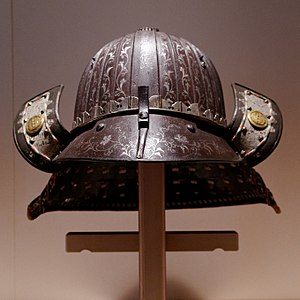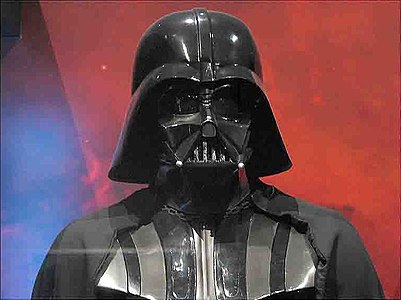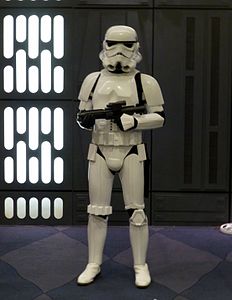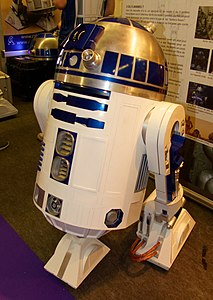Verified: 10 months ago
SafeTensor
The FLUX.1 [dev] Model is licensed by Black Forest Labs. Inc. under the FLUX.1 [dev] Non-Commercial License. Copyright Black Forest Labs. Inc.
IN NO EVENT SHALL BLACK FOREST LABS, INC. BE LIABLE FOR ANY CLAIM, DAMAGES OR OTHER LIABILITY, WHETHER IN AN ACTION OF CONTRACT, TORT OR OTHERWISE, ARISING FROM, OUT OF OR IN CONNECTION WITH USE OF THIS MODEL.
Inspired by the works of American conceptual designer Ralph McQuarrie (June 13, 1929 - March 3, 2012), whose conceptual designs for Star Wars defined the iconic looks of the franchise. To see his works, please go to:
https://www.starwars.com/the-empire-strikes-back-ralph-mcquarrie
https://www.iamag.co/star-wars-the-art-of-ralph-angus-mcquarrie-100-concept-art
Known problem(s):
Flux does not know Star Wars ships well, and this is a McQuarrie style LoRA, not a Star Wars concept Lora, which would require a much larger dataset. So the LoRA has problem rendering ships faithfully. You can try lowering the weight to 0.8 and see if the rendering improves.
Quoting from his entry on wikipedia:
I just did my best to depict what I thought the film should look like, I really liked the idea. I didn't think the film would ever get made. My impression was it was too expensive. There wouldn't be enough of an audience. It's just too complicated. But George knew a lot of things that I didn't know. —McQuarrie on Star Wars.[3]
The young filmmaker George Lucas was impressed by McQuarrie's work and met with him to discuss his plans for a space-fantasy film, The Star Wars. Lucas sought visual reference material to support his pitch to film studios and purchased pieces of science fiction artwork by John Berkey.[4] In 1975, Lucas commissioned McQuarrie to illustrate several scenes from the script of the film. McQuarrie may have been inspired by some of Berkey's works, in particular a painting of a rocket-plane diving down through space towards a gigantic mechanical planet (the image had been used as cover art for the 1972 reprint of the short story anthology Star Science Fiction Stories No.4).[5]
McQuarrie's concept paintings were instrumental in helping Lucas to win approval from 20th Century Fox; armed with vivid illustrations of his planned movie, Lucas was able to convince Fox executives to take a gamble and fund his Star Wars project. Despite their scepticism, it became a huge success upon release in 1977.[1][2][3][6] Among McQuarrie's Star Wars portfolio were concept paintings depicting scenes on the planet Tatooine, inside the Mos Eisley cantina, inside the Death Star and on the moon of Yavin. During filming, Lucas ensured that many shots reproduced McQuarrie's paintings exactly, such was his esteem for McQuarrie's work.[7] McQuarrie has said of his work on Star Wars, "I thought I had the best job that an artist ever had on a film, and I had never worked on a feature film before. ... I still get fan mail — people wondering if I worked on Episode I or just wanting to have my autograph."[3]
McQuarrie designed many of the film's characters, including Darth Vader, Chewbacca, R2-D2 and C-3PO[8][9] and drew many concepts for the film's sets.[2] His production painting of R2-D2 and C-3PO wandering in the desert on the planet Tatooine was the first to be completed. His early concept for C-3PO was visibly inspired by the Art Deco Maschinenmensch robot from Fritz Lang's 1927 film Metropolis.[10][11] The painting had a particular impact on actor Anthony Daniels, who was about to turn down the part of C-3PO; "He had painted a face and a figure that had a very wistful, rather yearning, rather bereft quality, which I found very appealing," stated Daniels, and the appeal of McQuarrie's image convinced him to accept the role.[12]
At Lucas' suggestion, McQuarrie designed a breathing apparatus for Darth Vader to wear.[13] In an interview with Star Wars Insider Magazine, McQuarrie stated that Lucas' artistic direction was to portray a malevolent figure in a cape with samurai armour. "For Darth Vader, George [Lucas] just said he would like to have a very tall, dark fluttering figure that had a spooky feeling like it came in on the wind." McQuarrie noted that the script indicated that Vader would travel between spaceships and needed to survive in the vacuum of space, and he proposed that Vader should wear some sort of space suit. Lucas agreed, and McQuarrie combined a full-face breathing mask with a samurai helmet, thus creating one of the most iconic designs of space fantasy cinema.[12][14] A 1975 production painting of Darth Vader engaged in a lightsaber duel with Deak Starkiller (a character prototype for Luke Skywalker) depicts Vader wearing black armour, a flowing cape and an elongated, skull-like mask and helmet. Its similarity to the final design of Vader's costume demonstrates that McQuarrie's earliest conception of Vader was so successful that very little needed to be changed for production.[10] Working from McQuarrie's artwork, the costume designer John Mollo devised a costume that could be worn by an actor on-screen using a combination of clerical robes, a motorcycle suit, a German military helmet and a gas mask.[15] The prop sculptor Brian Muir created the helmet and armour used in the film from McQuarrie's designs.[16]
While McQuarrie was working on visualisation work for Lucas, he was also commissioned by an executive of Ballantine Books, Judy-Lynn del Rey, to produce the cover art of the forthcoming novelization of Star Wars. The first edition of Star Wars: From the Adventures of Luke Skywalker went to press in 1976 featuring McQuarrie's version of Darth Vader's helmet on the cover. Like the film, the book was a runaway success, and McQuarrie began a long relationship with the publisher, producing the artwork for 22 further titles for Del Rey Books between 1978 and 1987.[7]
From ChatGPT:
Ralph McQuarrie (1929–2012) was an American conceptual artist and illustrator, best known for shaping the visual identity of Star Wars. His iconic paintings and designs helped George Lucas bring the galaxy far, far away to life, making him one of the most influential concept artists in film history.
Early Life & Career Beginnings
Born in Gary, Indiana, McQuarrie later moved to California.
He worked as a technical illustrator for Boeing and created artwork for NASA, including Apollo program animations.
His background in industrial and technical design gave him a unique ability to make futuristic concepts feel functional and believable.
Star Wars & Lucasfilm
In the mid-1970s, George Lucas hired McQuarrie to create concept paintings for Star Wars: A New Hope to help sell the project to studios.
His stunning artwork convinced 20th Century Fox to fund the film.
He went on to design some of Star Wars’ most iconic characters, ships, and environments, including:
Darth Vader – Originally imagined with a breathing mask for space travel.
Stormtroopers – Featuring sleek armor and early blaster rifle designs.
C-3PO & R2-D2 – Inspired by Metropolis (1927) and early robot designs.
Millennium Falcon, X-Wings, and TIE Fighters – Gritty, realistic spacecraft with a used-future aesthetic.
Bespin’s Cloud City & Hoth’s Echo Base – Atmospheric, detailed worlds that made the universe feel vast and real.
Other Major Works in Sci-Fi & Film
While Star Wars was his most famous project, McQuarrie contributed to other legendary sci-fi films:
Close Encounters of the Third Kind (1977) – Concept art for alien ships.
E.T. the Extra-Terrestrial (1982) – Early designs for E.T. himself.
Battlestar Galactica (1978) – Designed the look of the Cylons and spacecraft.
Star Trek IV: The Voyage Home (1986) – Concept art for space scenes.
Indiana Jones (1980s) – Various uncredited concept illustrations.
Style & Influence
McQuarrie’s painterly technique combined realism with a dreamlike quality.
His use of light and shadow created a cinematic feel, influencing the final look of Star Wars.
He pioneered the idea of "used future" aesthetics, making sci-fi worlds look worn, lived-in, and real rather than sleek and pristine.
His influence is seen in The Mandalorian, The Force Awakens, and other modern Star Wars projects, which pay direct homage to his art.
Legacy
Won an Academy Award for Best Visual Effects for Cocoon (1985).
His original Star Wars paintings are treasured collectibles and continue to inspire artists.
George Lucas once said:
“Ralph McQuarrie was the first person I hired to help me envision Star Wars. His illustrations not only helped to bring the vision to life, but also inspired countless filmmakers.”Lucasfilm honored him in The Force Awakens (2015) by naming a character General McQuarrie.









